Alocasia Plant: Popular species and care tips
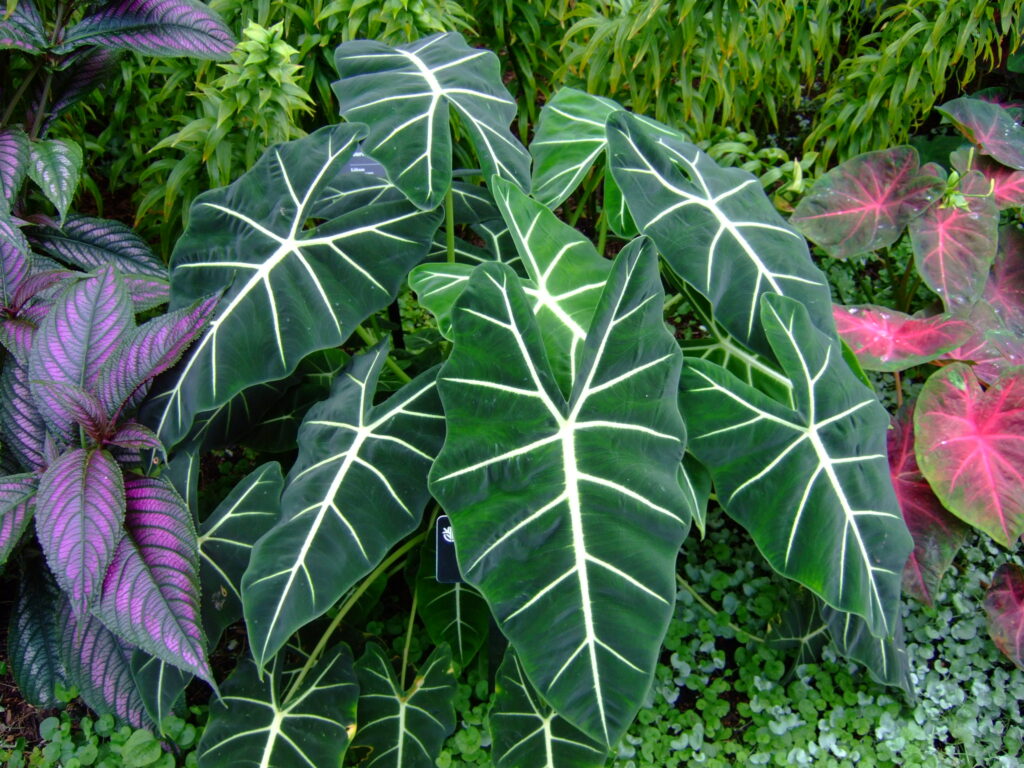
Plant description
Alocasia, named also Kris Plant, Elephant Ear or African mask plant, is a rhizomatous perennial native to tropical forests and humid and warm areas of South and South-East Asia. This unique plant belonging to the Araceae family is so named because of the shape of its big leaves which decorate any room in your home, as long as they have the good conditions of temperature and humidity.
This stunning houseplant has tall stems and bold, arrowhead or shield-shaped leaves with large protruding white veins. Furthermore, the Alocasia genus includes about 70 species that can be a great choice if you are looking for contemporary design quality in your indoors, you have just to be patient because it is not an easy to care plant. During summer, in their natural habitat, these unusual looking plants produce a fragrant, large flower measuring at least one meter, but this rarely happens indoors.
If you have children or pets, you may want to avoid these plants as the leaves are toxic to humans and animals!
How to care for Alocasia plants?
Here is all you need to know about the Alocasia plant care:
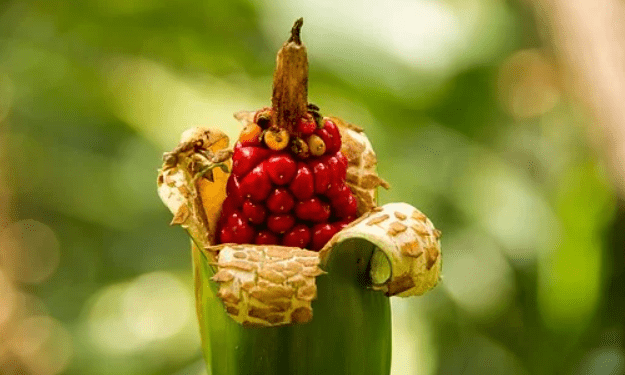
Water
Keep Alocasia plants moist all year. During spring and summer, one to two waterings per week can be sufficient. Generally, you have to wait until the soil is dry on the surface for the next watering. Reduce watering during autumn and winter because Alocasia is dormant in this period.
Soil
Use organic well-drained soil. If the soil seems a little heavy, add some sand. Also, to keep your Alocasia healthy, keep its soil consistently moist (but not soggy).
Light
Alocasias need bright, but not direct light which can burn the leaves. So, put it in a sunny to shady position and rotate it periodically to ensure even growth on all sides and dust the leaves often so the plant can photosynthesize efficiently.
Temperature
Native to tropical regions, Alocasia needs heat all year round, with temperatures between 15 and 25 ° C (15 to 18 ° C in winter and 20 to 25 in summer). use a heater or an air conditioner if necessary.
Humidity
Alocasia needs a humidity level of at least 60% to thrive. Spray the leaves frequently throughout the year and place clay balls in the cup of your pot to promote the humid atmosphere appreciated by the plant.
Fertilizer
Alocasia will appreciate a regular fertilization every 15 days in summer and once a month during the cold weather.
Pests
Alocasias can be easily attacked by mites, so always clean the dust from its foliage to avoid invasions. They may also be attacked by mealy bugs, scale, aphids, and spider mites. Every few weeks, you can spray the plant with warm soapy water to prevent these pests.
If the leaves begin to droop, it can be a sign of the plant having too little light, too much or too little water in the soil, or not enough nutrients.
Popular Alocasia species
Alocasia x amazonica
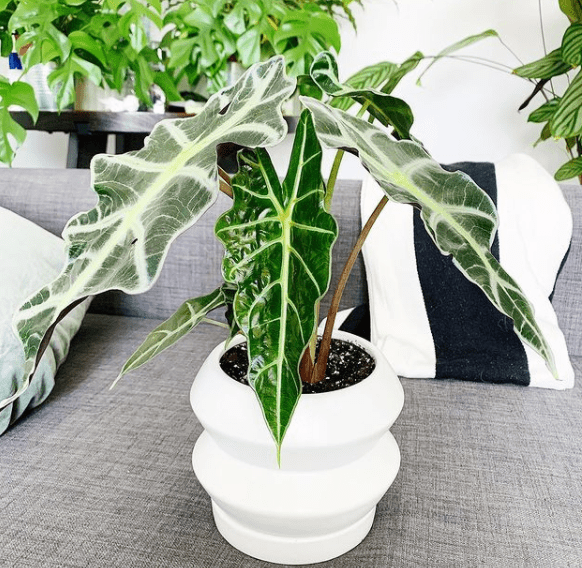
Alocasia x amazonica, named also Amazonian Elephant Ear, is a rhizomatous perennial evergreen hybrid with unknown parents, that has never been observed naturally in any rain forest in the world. This showy plant can be perfect as a house plant for indoors decoration. This Alocasia hybrid can reach 1.5 m high and has large, arrowhead-shaped, wavy-edged, dark green leaves accentuated by whitish to silvery-green veins. Furthermore, insignificant flowering spathes may appear to be followed by orange-red fruits.
A. sanderiana
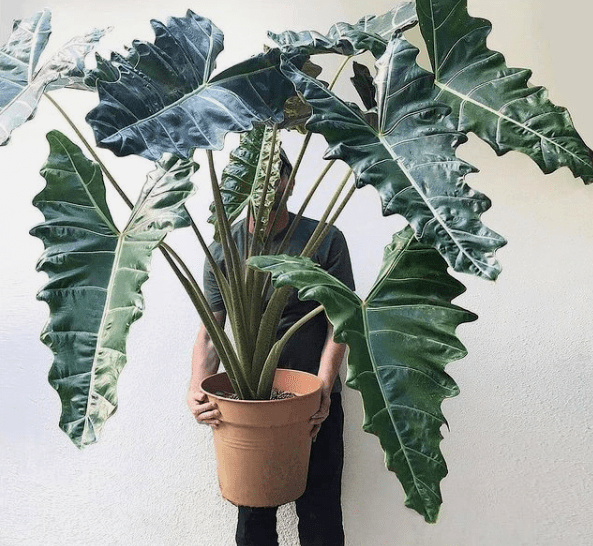
Alocasia sanderiana, popularly known by Kris plant or Sander’s Alocasia, is a tropical plant native to the Phillippines. Kris plant is a very popular houseplant appreciated by many plants collectors. It has quite remarkable foliage that can look especially stunning when the light shines through the leaves. The long fleshy petioles carry at their end thick, arrowhead-shape leaves with a purple lower surface and a dark-green upper surface. Moreover, cream-white flowers of around 15cm in length, appear enclosed by a spathe structure. Then round, bright orange-red fruits containing one seed each are produced. Alocasia sanderiana is propagated by the division of rhizomes in spring.
A. macrorrhiza
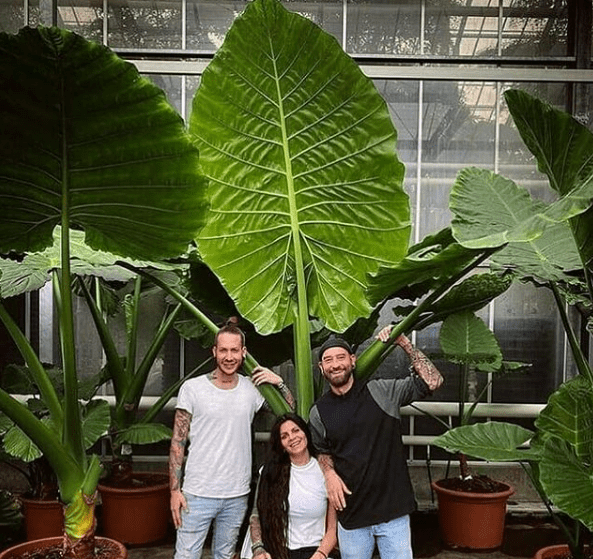
Alocasia macrorrhiza, named also Giant Taro or Upright Elephant Ear, is a striking herbaceous perennial in the Araceae family originating from tropical rainforest environments. Indeed, it is one of the largest Alocasias with its giant leaves that can reach more than 2 meters long. These leaves are lush green, arrow-shaped with prominent veins. They are also upwards and sit on long arching stems. This impressive and spectacular foliage provides a wonderful tropical effect in any garden. Moreover, the flowering parts are often inconspicuous and are partly concealed by the floral bract. They fall off at maturity to reveal a spike of red berries, each of which contains several pale brown seeds.
A. cuprea
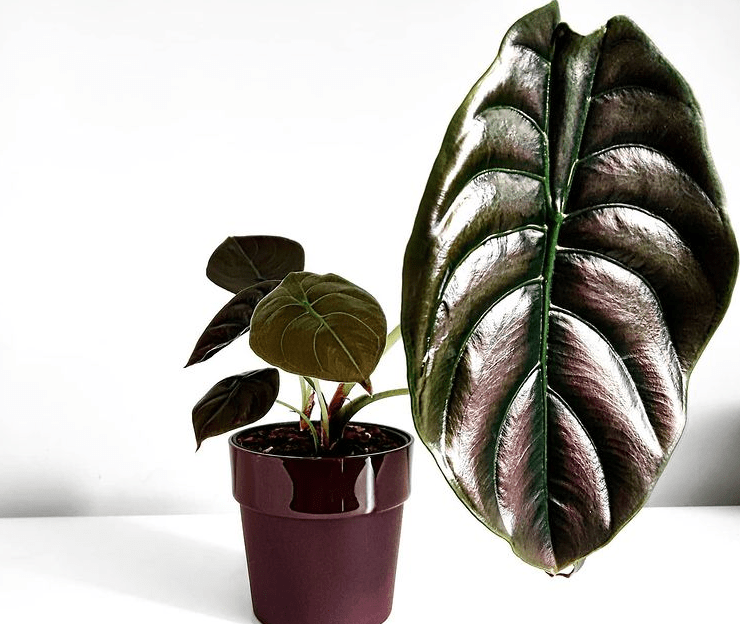
Alocasia cuprea, named also Mirror Plant or Jewel Alocasia, is a herbaceous perennial plant originating to hot humid areas, from Asia to South America. This stunning plant becomes one of the more popular indoor plants of its species and more and more sought after by exotic houseplant collectors worldwide. it has large and glossy dark coppery leaves with raised midribs veins on short to long petioles. The surface of these leaves has a metallic sheen and the undersides a red glow. During the growing season, purple spathe flowers do appear but are generally overshadowed by foliage. Compared to other plants, Alocasia cupera care needs more effort.
A. zebrina
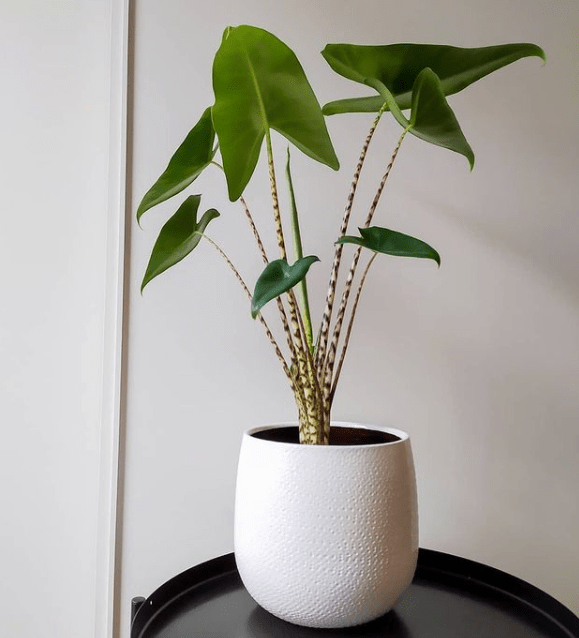
Alocasia zebrina is a rhizomatous tropical perennial of the arum family found in the wild in Brazil, where it grows at the base of much larger trees. This eye-catching, sculptural houseplant has its name from its zebra-striped stems which are truly unique. Not only the stems which are unique but also the large, glossy, elephant ear-shaped, deep green leaves. Alocasia zebrina is not the easiest houseplant to manage, but it will flourishes indoors with the right conditions.
A. cucullata
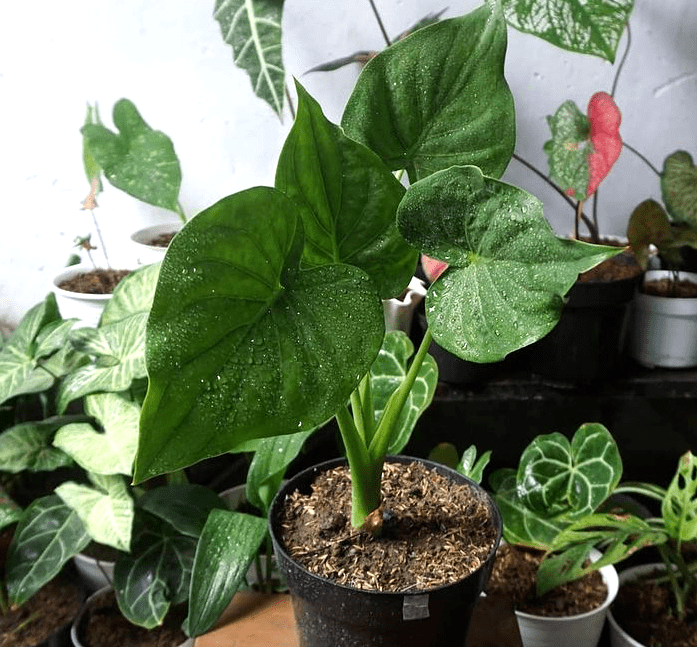
Alocasia cucullata, nicknamed as ‘Buddha’s Palm, is a real jungle plant native Thailand and Laos. This decorative plant can reach a height of 1 meter and has a beautiful heart-shaped, glossy, green leaves with curly, twisted tips and upturned margins and prominent veins on tall green stems. Inflorescences rarely produced indoors. If you are up for a challenge, the Alocasia cucullata is a great place to start.
Alocasia plumbea “nigra”
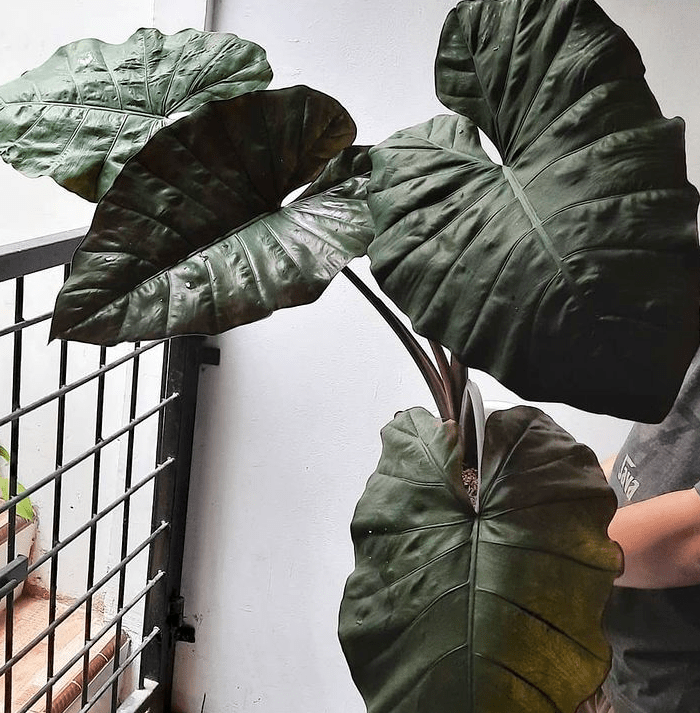
Alocasia plumbea “nigra”, also known as Nigra Elephant Ear or Black Metallic Taro, is a spectacular evergreen plant native to Indonesia and belonging to the Elephant’s Ear family. This Alocasia species is one of the impressive Alocasia varieties. It has large leaves that are dark green on their surface and metallic black on the underside and sit upon strong, purple stems. Moreover, these leaves with wavy edges start out green and turn black with time.
Did you find this helpful? Share it with your friends!